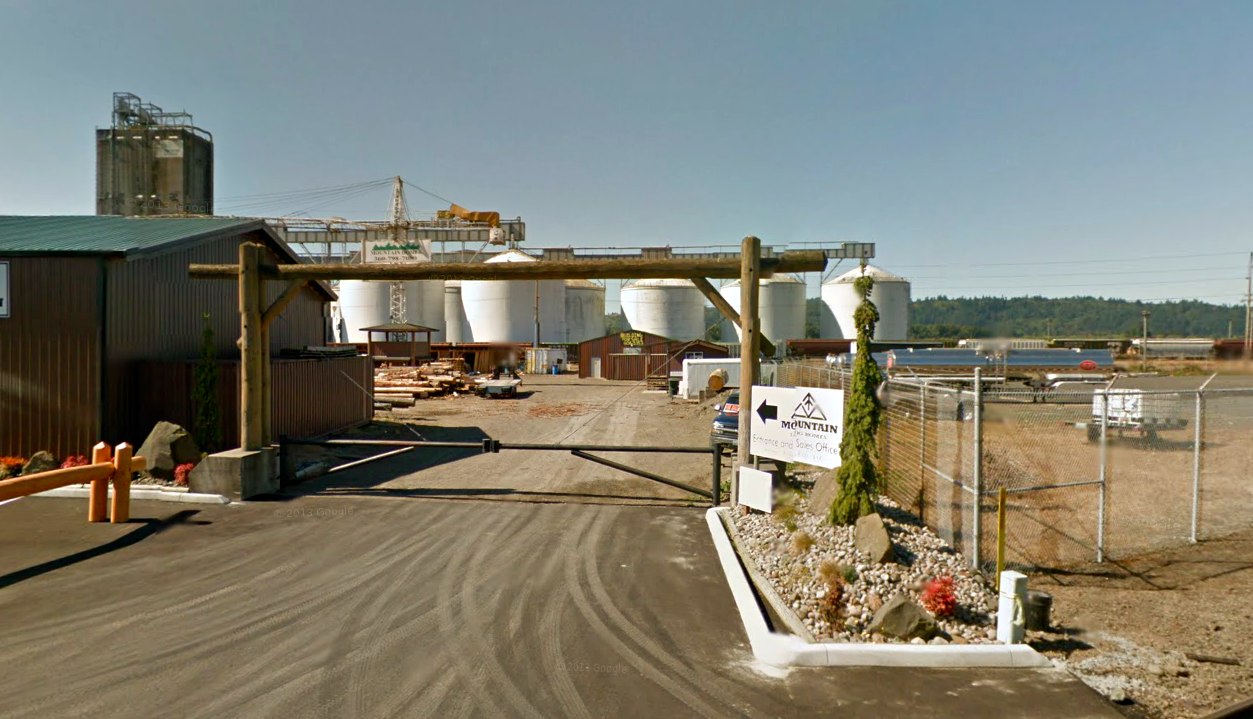It was a rainy weekend and we decided to do what we often do when faced with a rainy weekend: grab the daughter and the dog and head east over the mountains. In about an hour the sun begins peeking through the clouds and pretty soon you're in sunny Kittitas County. Or "Kitti-tatas" as my daughter pronounces it. Spot the "A" on the Google map below and you're at the place:
We'd brought a picnic with the intention of having lunch on the rocky banks of the Cle Elum River at Salmon le Sac but stopped for a restroom break in the old mining town of Roslyn. Roslyn has never shed the glamor it attained decades ago as the setting for "Northern Exposure." You're not going to see it in the screenshot below, though.
As I've done with past explorations, I try to discover the secret algorithm that Google street view uses when you enter the name of the town. For Roslyn, the letter "A" denotes Google's "center" of town. In this instance it's mid-block at 1st and Pennsylvania, facing the Pennsylvania Building. This building is about as un-Roslyn as you can get, but now I'm oriented, Google-style. Except the restrooms are one street down. To get there, I cross the street:
and bask in its bustle, its quirky charm and free parking.
It has a certain funky appeal made all the more so when we discovered what awaited us across the road from the restrooms:
Restrooms opposite Pioneer Park, Roslyn
but on Father's Day it looks like this
|
A rally of Vintage Trailers had taken up residence at the edge of town. Many were from B.C., and when they get together they re-enact the good old days of the 1950s and 1960s with stunning accuracy. The gals swap vintage martini glasses and make the trailers look like every teen-age girl's haven away from home. This one really reminded me of my bedroom when I was in highschool: surrounded on three sides by windows, just room for a bed and off the pantry so I had access to both food and telephone. Halfway in and halfway out of the family home it was important that I be have privacy, the ability to come and go without being noticed and basically camp in the garden.
The young woman who owns the trailer on the right, above, didn't respond to my question "Do you get good wifi in the campgrounds?" She looked at me uncomprehendingly and I later realized I'd broken the solemn rule of the vintage trailer lifestyle: talk of nothing that came after 1964. Once I understood that, it was OK. Actually, it wasn't OK. It was a little weird.
Trixie Belden and the Red Trailer Mystery sits on the book shelf.
This wasn't so much Father's Day as Mother and Daughter day, and we happily entered some twenty or so Barbie's Dream Houses
The guys show off their crafty skills (twirling airplanes made of beer cans and a table and improvised chairs fitted over the propane tanks. They drink beer and smoke cigars. Here they're playing "Mammas Don't Let your Babies Grow up to be Cowboys"and here's a classic live version by my man
Nifty solar power hookup as explained by dad and a gutted trailer redone with a Swedish minimalist esthetic. This appealed to me. It was practical and made room for the reality of kids.
This was an exception, however. It all began to feel a bit "film noir-ish". Maybe it was the movie we watched last night: "They Live by Night" which had two young run-aways spending Christmas on the lam in a tiny motel room, creating a bit of family they never had in the few days they had left together. They spent money he'd robbed from a bank on tinsel for the tree (his first) and lights for the mantel. They were "playing house", making it up as they went along.

UPDATE: My friend Heidi Dean, Newport Hills Community Club president, passed along the word that her old schoolmate has written posts for "Sisters on the Fly". On their website, you can find 55 pages of photos of their caravan trailers. It's a group dedicated to empowering women through the spirit of adventure and pride in your trailer. Cowgirl spirit. It's much more than that, too: they spent this spring demonstrating "Microdwelling" at the Shemer Art Center in Phoenix:
"'Micro' spaces have become a trend in recent years, especially in urban areas where space is limited and the costs of living are high. In its second year, MicroDwell 2014 is an exhibition of owner built and human inhabited micro-dwellings that highlight the environmental benefits of conscientious material selection, use of salvage materials, and minimization of waste. Varying from practical to artistic, structures on exhibit are required to be 600 square feet or less, self-contained, modular and portable.
While the idea of less is more may seem like a new concept, 'microdwelling' has deep roots. Indeed, 1950s families lived in 983 square feet and vacationed in 200 square-foot trailers. These spaces were more than enough then and Sisters on the Fly have long appreciated this concept, creating warm and welcoming spaces with a lot of imagination (and a little patience.) Since the group's inception in 1999, the members have been finding, restoring, and traveling in uniquely decorated, one-of-a-kind vintage trailers with whimsical names such as Sister Sioux, Rhinestone Cowgirl, and Calamity Jane. While these trailers are not a requirement of traveling with the group, they are the ideal for gathering at the end of a long day of fishing for good conversation and great food."
It was time to leave this brave new world and eat egg salad sandwiches. Sitting on the banks of the Cle Elum River, we watched a Western Tanager swoop from a treetop to the river over and over and mused on humans and their nesting behaviors.












































































